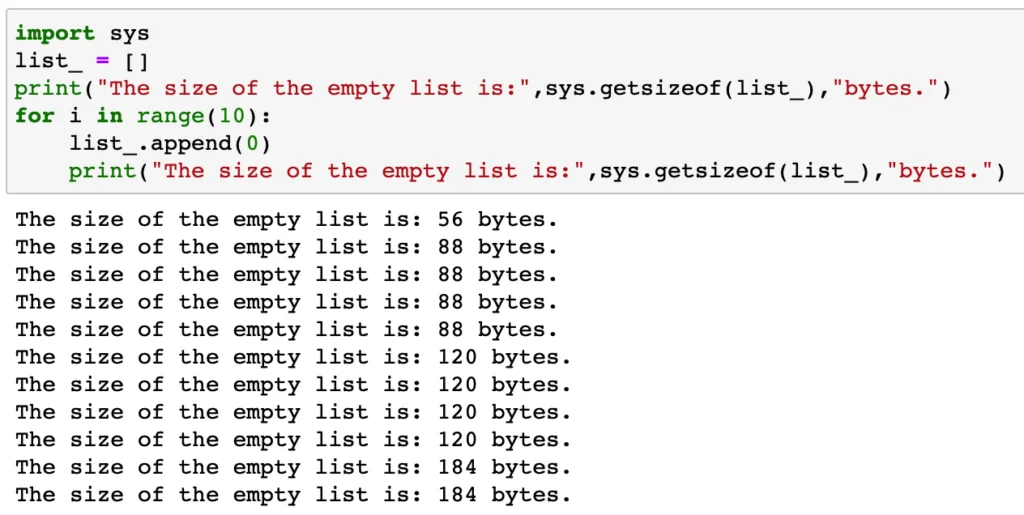Python数据结构选择:关键因素决定性能
发布时间: 2024-08-31 13:24:07 阅读量: 157 订阅数: 71 


# 1. 数据结构在Python中的应用概述
数据结构是计算机存储、组织数据的方式,它决定了数据处理的效率和质量。在Python中,数据结构的应用不仅限于传统的编程任务,更是数据分析、人工智能等领域不可或缺的工具。Python以其丰富的内置数据类型和灵活的特性支持多种数据结构的实现,如列表、元组、字典和集合等。本章将概述Python中的数据结构应用,为后续章节中对性能评估和优化策略的深入讨论奠定基础。
# 2. 性能评估的核心指标
## 2.1 时间复杂度分析
### 2.1.1 常见操作的时间复杂度
在分析算法的效率时,我们通常关注其时间复杂度,即算法执行所需时间随着输入规模的增加而增加的趋势。常见的操作时间复杂度有O(1)、O(log n)、O(n)、O(n log n)、O(n^2)等。例如,访问一个列表中的元素通常需要O(1)时间,而对一个无序列表进行排序则可能需要O(n^2)的时间。了解这些基本的时间复杂度有助于我们对算法进行初步的性能评估。
```python
def constant_time_operation():
# O(1)的操作,不依赖于输入规模n
pass
def logarithmic_time_operation():
# O(log n)的操作,例如二分查找
pass
def linear_time_operation(n):
# O(n)的操作,与输入规模n成线性关系
for i in range(n):
pass
def n_log_n_time_operation(n):
# O(n log n)的操作,通常出现在高效排序算法中
for i in range(n):
# 假设这是log n级别的操作
pass
def quadratic_time_operation(n):
# O(n^2)的操作,例如冒泡排序
for i in range(n):
for j in range(n):
pass
```
### 2.1.2 时间复杂度与算法效率
时间复杂度是衡量算法效率的一个重要指标,它描述了算法运行时间随输入规模增长的变化趋势。虽然常数时间操作O(1)在实际应用中最快,但随着问题规模的增大,其他时间复杂度的操作可能更为实际和重要。例如,尽管排序算法的平均时间复杂度为O(n log n),对于较小的数据集,O(n^2)的冒泡排序可能由于其常数因子较小而更快。
## 2.2 空间复杂度分析
### 2.2.1 记忆化存储与空间消耗
空间复杂度指的是算法在运行过程中临时占用存储空间的大小,与输入数据的规模相关。记忆化存储是一种常用的技术,它通过存储中间结果来避免重复计算,可以显著提升算法性能。然而,这也增加了空间消耗,特别是在处理大数据集时,需要权衡时间复杂度与空间复杂度之间的关系。
```python
def memoization_example(n):
# 假设这是一个需要大量计算的问题
# 通过字典存储已计算的结果
memo = {}
def recursive_function(i):
if i not in memo:
if i == 0:
return 0
elif i == 1:
return 1
else:
result = recursive_function(i - 1) + recursive_function(i - 2)
memo[i] = result
return result
return memo[i]
return recursive_function(n)
```
### 2.2.2 空间复杂度与资源管理
空间复杂度不仅影响算法的运行效率,还涉及资源管理的问题。合理管理内存资源可以提高程序的性能和稳定性。例如,使用生成器表达式代替列表推导式可以减少内存的使用,特别是在处理大量数据时。对于Python这种内存管理较为自动化的语言,开发者仍需要关注内存泄漏和过度使用内存的情况。
## 2.3 实际案例对比分析
### 2.3.1 典型数据结构的时间与空间对比
为了直观理解不同数据结构的时间与空间效率,我们可以对比常见数据结构的典型操作。例如,链表和数组在随机访问和插入删除操作上的时间复杂度和空间复杂度就大不相同。数组支持O(1)的随机访问,但在非尾部插入和删除操作上的时间复杂度为O(n)。而链表虽然在插入和删除上具有O(1)的时间复杂度,却无法像数组那样直接通过索引访问元素。
### 2.3.2 案例研究:数据结构性能差异的应用场景
在实际开发中,选择合适的数据结构对性能至关重要。以哈希表和平衡二叉搜索树为例,哈希表在大部分情况下提供了O(1)的查找效率,而平衡二叉搜索树则保证了O(log n)的最坏情况时间复杂度。在需要快速查找的应用场景下,哈希表可能是更好的选择,如Python中的字典类型;而在需要保持数据有序并且频繁进行范围查询的场景下,如实现数据库索引,平衡二叉搜索树可能是更优的选择。
在下文中,我们将继续深入探讨Python内置数据结构的性能特点。
# 3. Python内置数据结构的性能特点
Python作为一种解释型、高级编程语言,其提供的内置数据结构包括列表(list)、元组(tuple)、字典(dict)和集合(set),它们都是高度优化的,能够以极高的效率进行各种操作。在本章节,我们将深入探讨这些内置数据结构的性能特点,以及它们在不同应用场景下的表现。
## 3.1 列表与元组的性能考量
列表和元组是Python中最常用的序列类型,但它们在性能上有着本质的区别。
### 3.1.1 常用操作的性能比较
列表是可变的,支持元素的添加、删除和修改,而元组是不可变的,一旦创建,其内容无法更改。这些特性直接影响到它们在执行不同操作时的性能表现。
- **添加元素**:列表的`append`操作是O(1)的时间复杂度,因为列表是以动态数组的形式实现的,而元组的添加操作需要创建新的元组,是O(n)的时间复杂度。
- **访问元素**:列表和元组在访问元素时都是O(1)的时间复杂度,因为它们都是通过索引直接访问内存中的位置。
- **删除元素**:列表的`remove`操作是O(n)的时间复杂度,因为它需要遍历整个列表找到元素,而元组则没有删除操作。
下面通过代码示例来展示列表和元组在添加元素时的性能差异:
```python
import time
# 列表和元组初始化
my_list = []
my_tuple = ()
# 测试向列表和元组中添加1000个元素的性能
start_time = time.time()
for i in range(1000):
my_list.append(i)
end_time = time.time()
print(f"List append time: {end_time - start_time} seconds")
start_time = time.time()
for i in range(1000):
my_tuple += (i,)
end_time = time.time()
print(f"Tuple append time: {end_time - start
```
0
0





